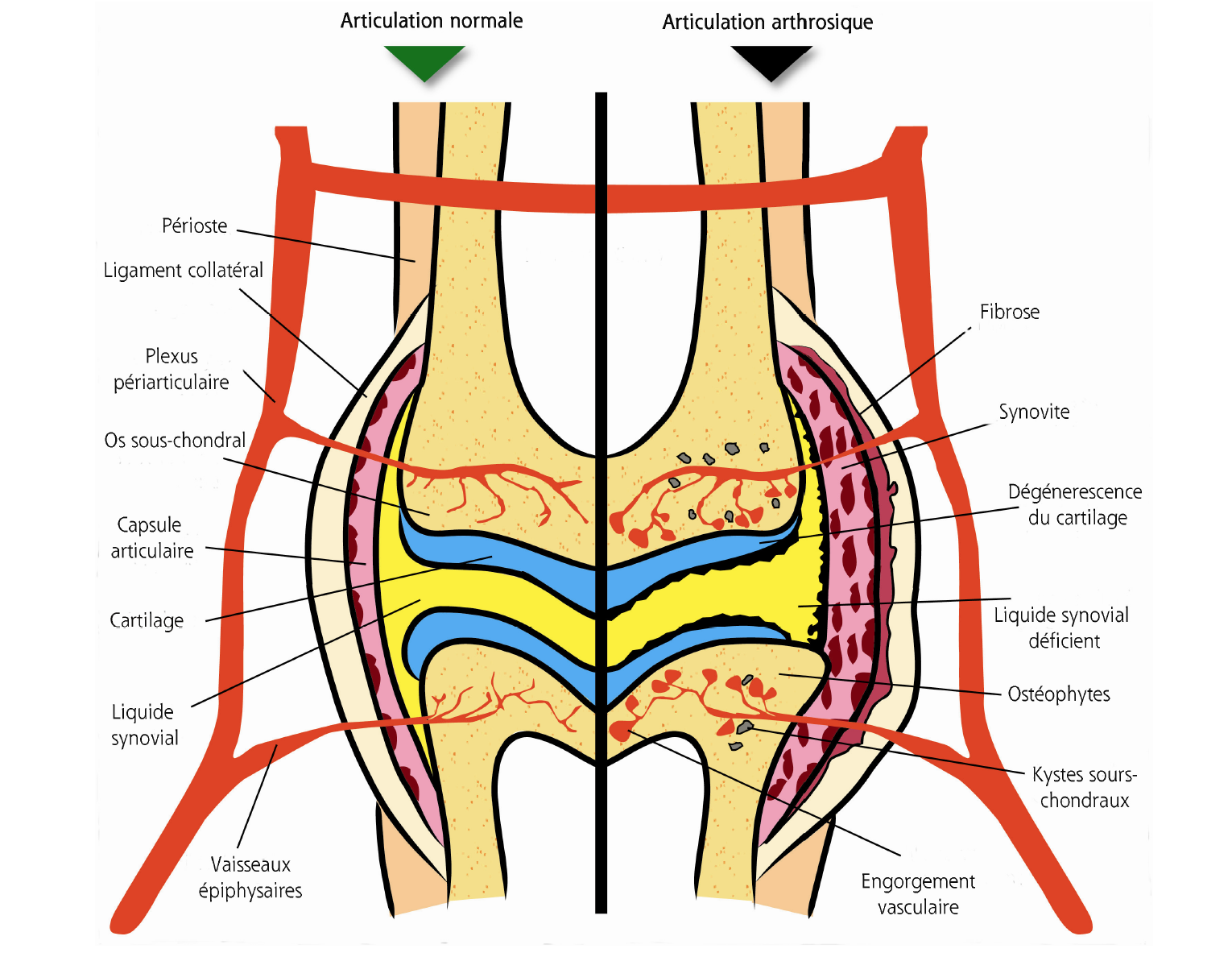Osteoarthritis
The word arthritis is a generic term and encompasses many different types of conditions of the joint.
Osteoarthritis (OA) is the most common form of arthritis and is present in 20% or 1 in 5 dogs over one year of age. When the term arthritis is used it will generally refer to OA, which is also known as degenerative joint disease (DJD).
Arthritis is a slow progressive disorder of one or more joints. It involves the deterioration of normal chemical and physical processes. Those processes affected by arthritis include;
- Blood flow – blockages of the blood vessels prevent good nutrition of the joint
- Joint fluid – the body’s natural joint lubricant is of a poor quality
- Joint cartilage – the body’s natural shock absorber breaks down
- Immune response – the body’s response to abnormal processes, such as joint inflammation
Arthritis typically leads to pain, lameness, joint inflammation and reduced mobility, resulting in a reduced quality of life.
The diagram below provides a comparison of a normal joint and a joint affected by arthritis.
What is Osteoarthritis?

Contributing factors to arthritis
The key contributing factors to arthritis include
- Breed Size – Large or giant breeds have a higher incidence of arthritis
- Age– Arthritis is more common with older dogs
- Weight– Overweight dogs are more prone to arthritis
- Breed inherited traits and conformation– Which cause or lead to arthritis such as hip dysplasia or elbow dysplasia
- Stress Activity– Levels of high stress or abnormal activity for long periods of time, such as excess athletic activities or gruelling work
- Joint injuries– injuries to the joint incite the arthritis process
Does my dog have arthritis?
REFERENCES
Click to view referencesArnoldi CC (1996) Development from osteoarthritis and nontraumatic osteonecrosis to osteoarthrosis. ARCO Newsletter 8(1):4-27
Francis DJ, Hutadilok N, Kongtawelert P, Ghosh P (1993) Pentosan polysulphate and glycosaminoglycan polysulphate stimulate the synthesis of hyaluronan in vivo. Rheumatol Int 13:61-64
Hegemann N, Kohn B, Brunnberg L, Schmidt MF (2002) Biomarkers of joint tissue metabolism in canine osteoarthritic and arthritic joint disorders. Osteoarthritis Cart. 10, 714-721
McLaughlin R (2000) Management of chronic osteoarthritic pain. Veterinary Clinics of North America: Small Animal Practice 30, 933-949

